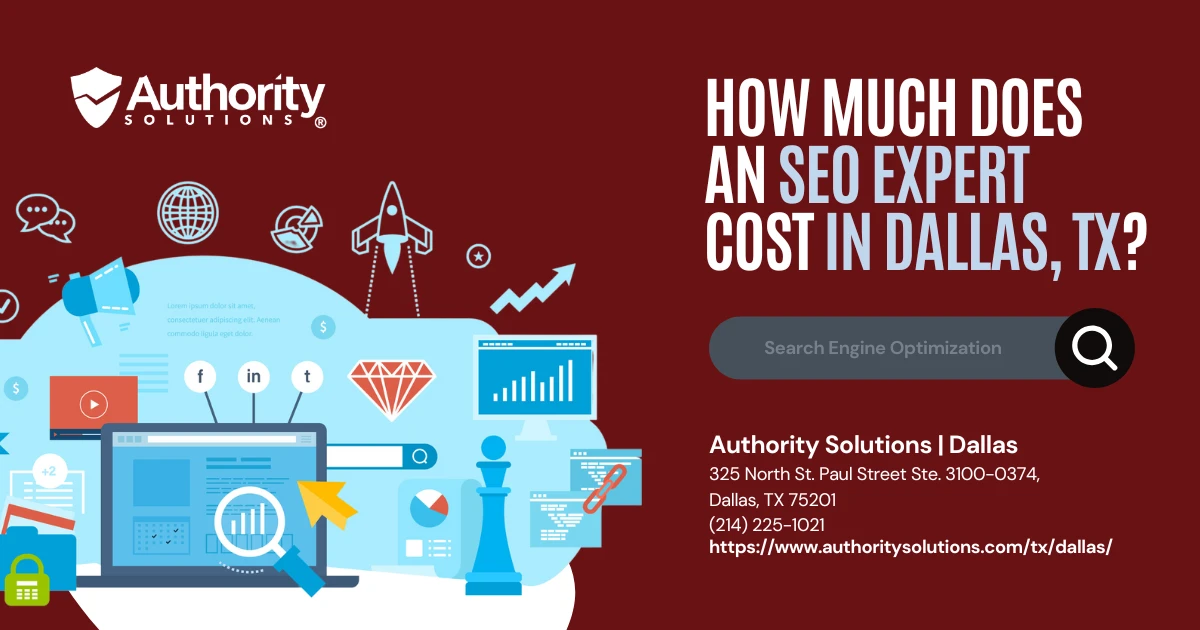Key Components of Effective On-Page SEO
Your website needs more than great content to attract consistent, quality traffic and rank well in search results. Optimizing the individual components of your pages boosts relevance, improves user experience, and strengthens overall digital visibility. Effective on-page practices allow search engines to understand your content better, increasing the likelihood of higher rankings. You establish a firm foundation for lasting digital growth by prioritizing essential factors within your pages.
Careful attention to every on-page element helps you achieve immediate visibility gains and sustained long-term performance. On-page SEO complements technical and off-page strategies, collectively building your brand authority online. To stay ahead, you need clarity on what comprises effective page optimization and how each element affects performance. A clear understanding of these practices guides your strategy toward measurable results.
What is On-Page SEO and Why Does It Matter?
On-page SEO refers to optimizing the various elements directly within your web pages to rank higher in search engine results pages (SERPs). It involves refining content, titles, metadata, URLs, images, and internal links to create pages that users and search engines understand clearly. When executed correctly, on-page SEO positions your website as relevant, valuable, and authoritative in the eyes of search engines. This approach ultimately translates to increased traffic, better user engagement, and higher conversion rates.
Proper on-page SEO improves search visibility and helps attract qualified organic traffic. Well-optimized pages meet the expectations of users who click from search results, encouraging them to stay longer and engage deeper. Additionally, strong on-page practices help your pages stand out among competitors targeting similar topics or keywords. Prioritizing on-page improvements leads to sustainable SEO performance and better returns on your digital investment.
Understanding the most critical elements allows you to implement effective optimization techniques systematically.
Core Elements That Strengthen Your SEO Foundation
A well-optimized webpage requires a combination of technical precision and strategic content structuring. Each element makes your content more accessible, engaging, and valuable to both users and search engine crawlers. Refining key on-page factors improves your site’s readability, navigation, and relevance, directly impacting rankings and user experience.
Title Tags and Meta Descriptions That Make an Impression
Title tags are critical to your on-page strategy by influencing your search rankings and click-through rates (CTR). They inform search engines and users about the content of each page clearly and concisely. Optimal title tags include your primary keywords while staying within the recommended 50-60 character length. Crafting compelling and accurate titles significantly increases your chances of attracting targeted clicks.
Meta descriptions complement title tags by offering brief yet persuasive summaries that entice users to click. While meta descriptions do not directly impact rankings, they greatly affect your CTR from SERPs. Writing unique descriptions under 160 characters that accurately portray the page's content improves the chances of attracting relevant visitors. Both optimized title tags and meta descriptions set strong first impressions, influencing the overall effectiveness of your webpage.
URL Structure and Site Hierarchy
Creating clear, descriptive URLs supports your SEO by clarifying page content for users and search engines. URLs that include relevant keywords naturally increase your page’s relevance for those terms. Short and straightforward URLs without unnecessary characters facilitate easy readability and better sharing. They guide visitors and crawlers effortlessly through your website, enhancing user experience and SEO visibility.
A logical site hierarchy improves crawlability, helping search engines easily understand relationships among your pages. Organizing your pages systematically ensures visitors can quickly navigate your site, find information, and remain engaged. Your site architecture should follow a logical path, allowing users to move seamlessly from general to more specific content. Thoughtful structuring enhances your overall SEO performance by effectively distributing authority among pages.
The structured use of headers and content formatting further supports well-organized URLs and a clear hierarchy.
Header Tags (H1 to H6) and Content Organization
Header tags significantly enhance the readability and scannability of your web pages. They provide clear structural cues, guiding readers effortlessly through content sections and helping search engines understand page hierarchies. The H1 header should reflect the primary topic and keyword, setting the following stage. Subsequent headers (H2-H6) organize subsections, providing structure and enabling users to navigate the page quickly.
Using header tags appropriately helps improve the page’s SEO performance by clearly communicating topical relevance. Properly structured content also has a better chance of being featured in rich snippets, boosting your page visibility. Ensure headers accurately represent the content beneath them and naturally include relevant, related keywords. The combined effect of header tags and organized content boosts readability, reduces bounce rates, and enhances your audience’s overall experience.
Strategic keyword placement within content further reinforces page relevance and ranking potential.
Keyword Optimization and Content Relevance
Selecting and implementing the right keywords significantly impacts your SEO effectiveness. Thorough keyword research identifies terms your target audience actively uses when searching. Incorporating these keywords naturally within strategic locations—such as headings, titles, and the first paragraph—strengthens relevance signals to search engines. Keyword density must remain balanced to avoid penalties associated with overuse.
Search engines have evolved beyond simple keyword matching, employing semantic analysis to understand content context. By including related keywords and synonyms naturally throughout your text, you help search engines accurately interpret and rank your pages. This method allows your content to remain user-friendly while appealing effectively to search algorithms. High-quality, relevant content built around strategic keyword optimization supports sustainable rankings and organic traffic growth.
Internal Linking for SEO and User Experience
Internal linking plays a crucial role in both SEO and website navigation. By linking related pages within your site, you establish clear pathways that allow search engines to crawl and index your content more effectively. Strategic internal linking distributes page authority, signaling which pages are most important. A well-structured linking strategy ensures users find relevant content easily, keeping them engaged for longer.
Anchor text plays a significant role in enhancing the effectiveness of internal links. Using descriptive, keyword-rich anchor text helps search engines understand the context of the linked page while guiding users to relevant information. Avoid generic anchor text like “click here,” as it provides no value for SEO. Thoughtful internal linking strengthens the overall structure of your website and improves search rankings for key pages.
Beyond text-based optimization, images also contribute significantly to SEO performance when properly managed.
Image Optimization and Alt Text
Images enhance the visual appeal of your content but must be optimized to avoid negatively impacting site performance. Large, uncompressed images can slow page loading, directly affecting rankings and user experience. Compressing images while maintaining high quality ensures your site remains fast and responsive. Descriptive file names and properly structured folders help search engines understand image content better.
Alt text plays a vital role in accessibility and SEO. Search engines rely on alt text to interpret image content, as they cannot “see” visuals like humans do. Writing descriptive, keyword-relevant alt text ensures your images contribute to page relevance without overloading them with forced keyword usage. Additionally, optimizing images improves accessibility for visually impaired users, creating a more inclusive experience.
A mobile-friendly experience further strengthens on-page SEO, ensuring all visitors can navigate and interact with your content effectively.
Mobile Friendliness and Responsive Design
With search engines prioritizing mobile-first indexing, responsive design is no longer optional. A mobile-friendly site ensures your content adapts seamlessly to different screen sizes, providing a consistent device experience. Visitors expect fast-loading pages, easy navigation, and readable text on mobile screens. Websites that fail to meet these expectations risk losing rankings and frustrating potential customers.
A well-structured web design improves both usability and search performance. Mobile-friendly pages should feature touch-friendly elements, streamlined navigation, and images that scale properly without distortion. Google’s Core Web Vitals also factor into rankings, meaning load speed, visual stability, and interactivity must be optimized for mobile users. Ensuring a responsive design benefits both user experience and SEO outcomes.
On-page SEO involves multiple elements working together, but managing them effectively requires expertise and ongoing strategy adjustments.
Optimize your pages for better rankings with proven SEO techniques.
Why Businesses Need a Professional SEO Strategy
Optimizing individual pages requires more than just adjusting metadata or keywords. A well-executed SEO strategy involves technical expertise, content refinement, and ongoing analysis. Many businesses struggle to keep up with algorithm changes, missing critical updates that impact their rankings. A professional SEO team ensures that every aspect of on-page optimization aligns with best practices and search engine guidelines.
Partnering with a digital marketing agency gives businesses expert insights, advanced tools, and a results-driven approach. Agencies conduct in-depth audits, identify optimization opportunities, and execute data-backed strategies tailored to business needs. A dedicated team ensures consistent improvements across all SEO factors, from content optimization to technical adjustments. Businesses that invest in professional SEO gain long-term ranking stability and higher organic traffic.
A structured SEO approach involves multiple components, and professional agencies address these challenges through specialized services.
Data-Driven Keyword and Content Strategies
An effective SEO strategy begins with thorough keyword research and content planning. SEO specialists analyze search trends, competition, and user intent to identify the most valuable keywords for your business. Content is strategically optimized to align with these search patterns while maintaining readability and engagement. A well-crafted content strategy ensures that pages rank higher and convert visitors into customers.
Technical SEO Enhancements for Better Performance
Beyond content, technical SEO plays a significant role in on-page optimization. Experts analyze site speed, structured data, and indexability to ensure search engines can efficiently crawl and rank your pages. Implementing schema markup, improving Core Web Vitals, and fixing broken links contribute to better performance. These improvements help maintain search visibility while enhancing overall website functionality.
Continuous Monitoring and Optimization
SEO is an ongoing process requiring continuous monitoring and adaptation. Search engines frequently update their algorithms, which means rankings can fluctuate without proactive adjustments. Professional agencies track key metrics, analyze performance trends, and refine strategies based on real-time data. This proactive approach ensures your website remains competitive and consistently ranks for targeted search queries.
Enhancing User Experience for Higher Engagement
A well-optimized website not only ranks well but also keeps visitors engaged. SEO professionals focus on user experience factors like page speed, mobile usability, and intuitive navigation. Improving these elements reduces bounce rates and increases the likelihood of conversions. A seamless user experience translates to higher dwell time, signaling to search engines that your content is valuable and relevant.
Without expert guidance, businesses risk implementing outdated or ineffective SEO tactics. A knowledgeable team ensures strategies align with the latest search engine requirements and maximize results.
Authority Solutions® Helps You Build a Strong SEO Foundation
Authority Solutions® provides comprehensive SEO services to improve rankings, increase organic traffic, and enhance user engagement. Our approach optimizes every on-page element, ensuring search engines and visitors receive the best possible experience. We analyze page structures, refine metadata, and implement cutting-edge SEO techniques that align with evolving algorithms.
Our team specializes in crafting data-driven content strategies tailored to your business needs. Targeting high-value keywords and optimizing page structures, we help businesses achieve measurable SEO growth. Our optimization ensures your website remains competitive, delivering sustained results over time. We combine technical expertise with creative content refinement, ensuring a well-balanced approach to search visibility.
With a results-driven mindset, Authority Solutions® prioritizes efficiency and long-term growth. We continuously monitor performance metrics, making necessary adjustments to maintain top rankings. Our team stays updated on industry trends, providing proactive solutions that keep your website ahead of competitors. When you work with Authority Solutions®, you receive a personalized SEO strategy to meet your unique business objectives.
A strong on-page SEO strategy lays the groundwork for higher search rankings, increased traffic, and better engagement. Authority Solutions® delivers the expertise and strategy necessary to achieve lasting success.
Conclusion
On-page SEO is a fundamental component of any successful digital marketing strategy. Optimizing key elements such as metadata, content structure, internal links, and mobile responsiveness ensures your pages perform well in search rankings. Implementing best practices consistently strengthens visibility, improves user experience, and drives long-term organic growth. Businesses that prioritize on-page optimization see higher engagement rates and more valuable traffic.
Authority Solutions® helps businesses implement effective SEO strategies tailored to their unique goals. Our expertise in on-page SEO ensures that every webpage is optimized for maximum performance. We combine data-driven insights with technical refinement, allowing businesses to achieve sustainable success. Partnering with Authority Solutions® gives you access to industry-leading SEO professionals who work tirelessly to improve your online presence. If you’re ready to enhance your search rankings and grow your business, our team is here to help.
Strengthen your on-page SEO strategy and boost search visibility today.
Frequently Asked Questions
What are the key components of on-page SEO?
On-page SEO focuses on optimizing elements like page titles, meta descriptions, header tags, keyword usage, internal linking, and image optimization to improve visibility in search. These on-page SEO factors make it easier for search engines to aunderstand your content. Proper structuring, straightforward navigation, and on-page UX optimization help search engines and users engage with your website effectively. Implementing on-page SEO techniques ensures that your pages rank higher in search results.
Which element is most important for on-page SEO?
There isn't a single most important on-page SEO element, but page titles, meta descriptions, keyword optimization, and high-quality content have the most significant impact. Search engine crawlers rely on structured data and properly placed SEO elements to interpret your page's relevance. Ensuring that the content on your page is well-optimized and free of keyword stuffing improves readability and rankings. Strong on-page SEO efforts contribute to better organic traffic and engagement.
What are the four pillars of SEO?
The four pillars of SEO include on-page SEO, off-page SEO, technical SEO, and local SEO. On-page SEO is important because it focuses on optimizing the page's content, while off-page SEO involves acquiring backlinks to improve domain authority. Technical aspects ensure that your website is structured properly for search engine crawlers, making it easier for search engines to index your content. Lastly, local SEO enhances visibility for location-based searches.
Why is on-page SEO important for rankings?
On-page SEO is important because it directly influences how well search engine crawlers understand and rank your pages. Optimized SEO elements such as headings, internal links, and high-quality content make navigating your site easy for users and search engines. A well-structured SEO checklist addresses important factors, such as page title optimization and mobile responsiveness. On-page SEO techniques help boost visibility and user engagement, leading to better rankings.
What is considered on-page SEO?
On-page SEO refers to optimizations applied directly within the page's content to improve its search visibility. This includes meta tags, title tags, headers, internal linking, and content optimization. On-page factors ensure that search engines correctly interpret your content while enhancing user experience. Proper formatting, keyword placement, and structured navigation push important content to the forefront for better ranking potential.
What factors have the most impact on SEO?
Key SEO factors you need to focus on include on-page SEO basics, high-quality content, mobile optimization, page speed, and backlinks. Google prioritizes important elements like relevant keywords, properly structured SEO elements, and engaging user experiences. Front-load important information in your content to capture user attention and search engine relevance. A complete SEO checklist helps ensure that all important factors are addressed for optimal performance.
How does mobile optimization impact on-page SEO?
Optimizing for mobile devices ensures your website delivers a seamless experience across different screen sizes. A mobile-friendly page on your website enhances user engagement and makes it easier for search engines to index and rank your content. Google’s mobile-first indexing prioritizes websites that load quickly and function smoothly on smartphones and tablets. Implementing on-page UX optimization improves accessibility and retention, leading to more substantial search visibility.
How does URL structure affect SEO rankings?
A clear and concise domain name and URL structure helps Google understand page relevance and improve indexing. Short, keyword-rich URLs provide an important information signal to search engines, making them more effective in rankings. URLs should be descriptive yet straightforward, avoiding unnecessary parameters that confuse users and search bots. A well-optimized URL structure boosts your search rankings by improving navigation and click-through rates.
What role do images play in on-page SEO?
Optimizing images enhances image search visibility and improves page load speed, a vital ranking factor. Descriptive alt text makes it easier for search engines to interpret visual content while improving accessibility. Proper image compression prevents slow page loading times, enhancing user experience on desktop and mobile devices. Structured image optimization ensures that your on-page SEO contributes to a fully optimized website.
How can internal linking improve SEO?
Internal linking connects relevant pages within your site, making it easier for search engines to crawl and understand content relationships. Linking to another page on your website distributes link equity, improving the ranking potential of key pages. Well-placed internal links guide users to important on-page SEO content while reducing bounce rates. A structured internal linking strategy strengthens your overall search engine optimization efforts, leading to better rankings.







